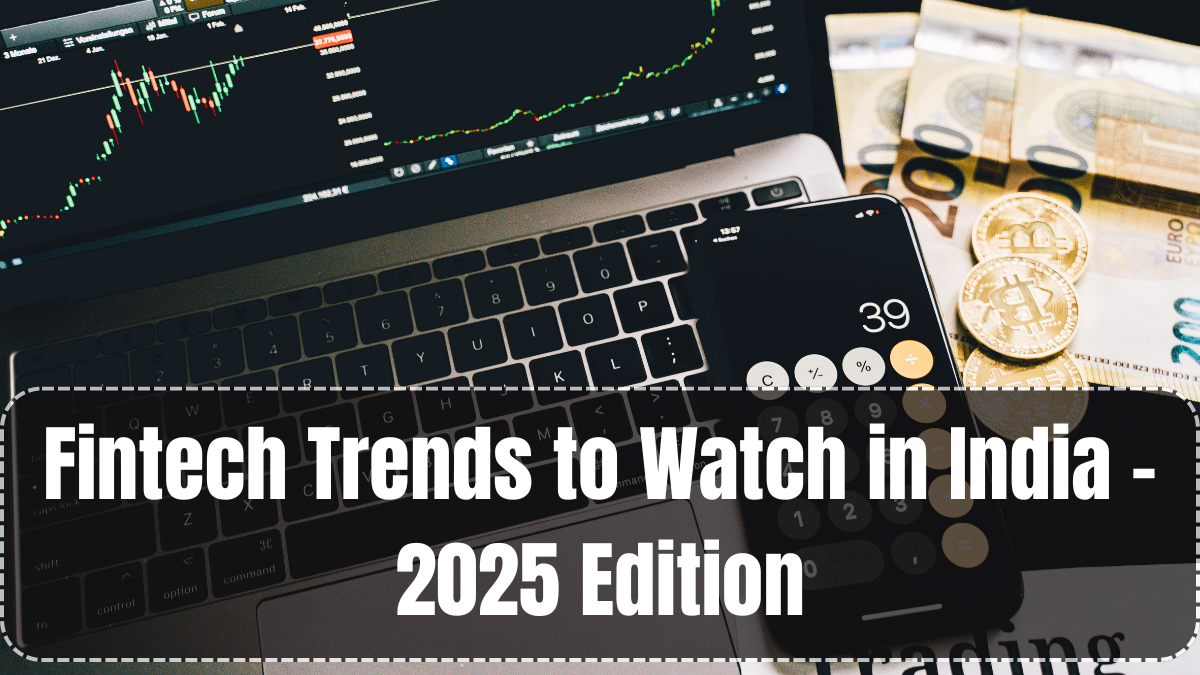India’s fintech sector is evolving at an unprecedented pace, and 2025 is proving to be a landmark year. With over 1.2 billion digital payment users, rising regulatory support, and deep rural penetration, the Fintech Trends India 2025 represent a new wave of innovation, accessibility, and personalization. From AI-powered lending to embedded insurance and CBDC (digital rupee), fintech is transforming how Indians save, invest, borrow, and transact.
As government policies, tech startups, and consumer demand align, India is not only adapting to fintech — it’s leading it globally. This article highlights the most significant trends defining India’s digital finance landscape in 2025.

1. UPI 3.0 and Offline Payments Take Center Stage
UPI remains the backbone of India’s digital payment ecosystem, and with UPI 3.0, the experience is now smarter and more inclusive. Key upgrades in 2025 include:
-
Offline UPI payments via NFC and QR codes
-
Auto-pay for recurring bills with enhanced authentication
-
Voice-based transactions in regional languages
-
Cross-border UPI integration with Singapore, UAE, and UK
NPCI reports over 14 billion UPI transactions monthly in 2025. Even feature phones are now UPI-enabled, bridging the digital divide in rural India.
2. AI-Powered Lending and Credit Scoring
The Fintech Trends India 2025 show AI-driven credit assessment dominating personal and MSME loans. Fintech startups now use:
-
Mobile usage patterns
-
Social media behavior
-
Utility bill history
-
Digital payment footprints (e.g., UPI and wallet history)
Platforms like KreditBee, CASHe, and LazyPay are approving loans within 30 minutes, while apps like Navi and Bajaj Finserv use AI to reduce NPAs.
This innovation helps first-time borrowers, gig workers, and students access credit even without traditional credit scores or bank statements.
3. Digital Rupee (CBDC) Gains Traction
India’s Central Bank Digital Currency — the Digital Rupee (e₹) — is now in active use across urban metros and Tier 1 cities. As per RBI’s Q2 report 2025:
-
Over 1.8 million merchants accept the e₹
-
e₹ wallets are integrated into apps like PhonePe, Paytm, and Google Pay
-
Pilots in government DBT programs show faster, more transparent transfers
CBDC offers an alternative to cash with full traceability and no bank dependency. Its rollout in B2B and cross-border trade segments is underway, making it one of the top fintech transformations in India.
4. Embedded Finance and API Banking
The Fintech Trends India 2025 spotlight the explosion of embedded finance — where financial services are integrated directly into non-financial apps.
Examples include:
-
Buy Now Pay Later (BNPL) on Flipkart and Amazon
-
Insurance-on-checkout on travel, electronics, and e-commerce sites
-
Gold savings embedded into food delivery apps like Zomato
-
API-powered current accounts for freelancers and SMBs through RazorpayX and Open
This seamless experience boosts financial inclusion by meeting users at the point of need, without navigating traditional banks.
5. WealthTech and Micro-Investments for Gen Z
In 2025, investment platforms are designed for Gen Z and first-time earners. Micro-investing apps like Jar, ET Money, and Groww offer:
-
Gold savings from ₹10
-
Mutual fund SIPs from ₹100
-
Stock trading with gamified dashboards
-
Real-time market updates and AI-based portfolio tracking
RBI-backed account aggregators (AA) also allow users to consolidate data from multiple accounts and track net worth easily. DIY investing is now mainstream, especially among salaried youth and college students.
6. RegTech and Cybersecurity in Focus
As fintech adoption surges, regulatory technology (RegTech) and cybersecurity become essential trends. Startups are using AI to:
-
Detect fraud in real-time
-
Verify identity through video KYC
-
Monitor compliance with SEBI, RBI, and PFRDA regulations
-
Automate reporting for NBFCs and digital lenders
With rising data privacy awareness, most apps now support end-to-end encryption, Aadhaar-based consent logs, and multi-layer login systems for safer transactions.
FAQs
What is the biggest fintech trend in India in 2025?
UPI 3.0 with offline payments and AI-driven lending are two of the biggest fintech innovations in India this year.
How does the Digital Rupee work?
India’s CBDC (e₹) is issued by RBI and works like digital cash. It can be stored in a wallet and used for everyday payments or government subsidies.
Are micro-investment apps safe in 2025?
Yes. SEBI and RBI have tightened security and compliance, making apps like Jar, Groww, and ET Money safe for small investments.
What is embedded finance?
It’s the integration of financial tools like payments, loans, or insurance into non-financial apps like shopping, travel, or delivery platforms.
Can people in rural India access fintech services?
Absolutely. Thanks to UPI on feature phones, digital bank accounts, and local-language apps, fintech is now accessible in even the most remote parts of India.
Click here to know more.
